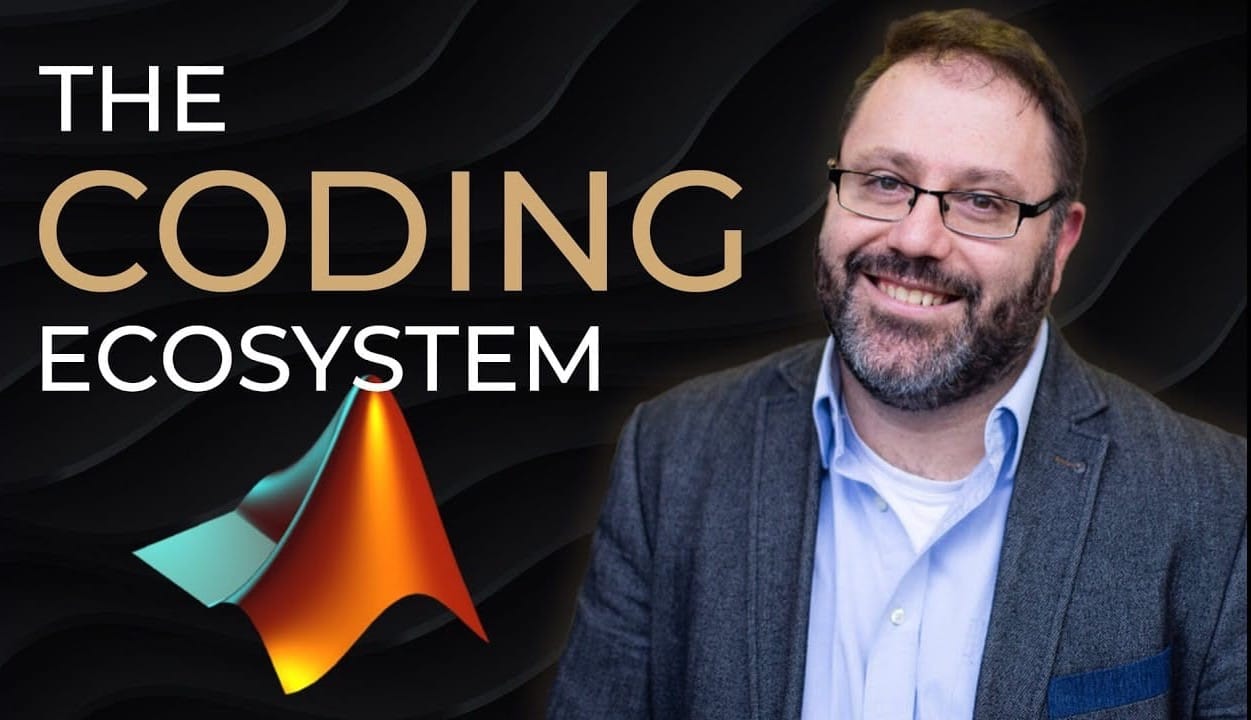Introduction
Choosing the right programming language for technical computing can be challenging, especially with multiple powerful options available. MATLAB, Python, and Julia each offer unique strengths, making them popular choices among engineers, data scientists, and researchers.
In a recent podcast, Gareth Thomas, former MathWorks employee and founder of Version Bay, shared insights into these tools, highlighting their advantages and applications across various industries. In this blog post, we will explore the key differences between MATLAB, Python, and Julia, examine their strengths in different domains, and draw on the insights from Gareth to help you determine which tool best fits your specific needs.
MATLAB vs. Python vs. Julia: The Hidden Truths - Gareth Thomas | Podcast #147
The Key Advantages of MATLAB, Python, and Julia in Technical Computing
MATLAB, Python, and Julia are three of the most widely used programming languages, each offering unique advantages depending on the application.
MATLAB has long been a trusted tool in automotive, aerospace, and safety-critical industries, where compliance and traceability are essential. Python, with its extensive open-source ecosystem, dominates fields such as AI, machine learning, and data science, while Julia is gaining popularity in high-performance numerical computing and scientific research due to its speed and efficiency.
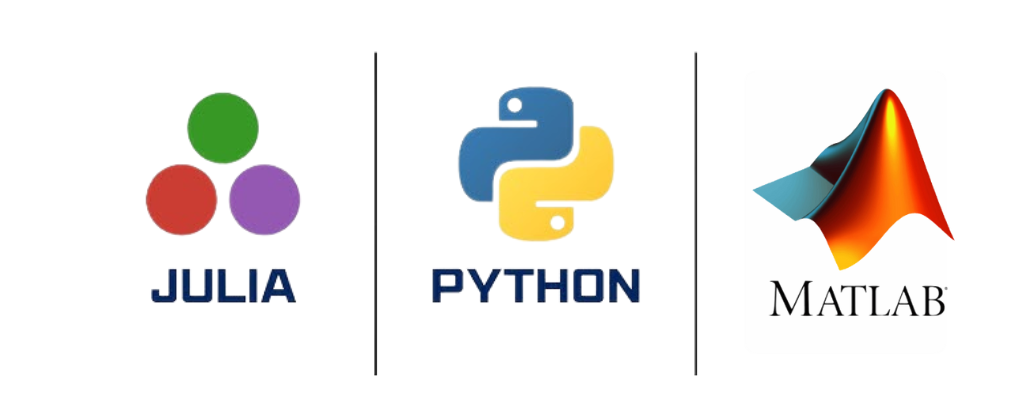
One of MATLAB’s standout features is Model-Based Design (MBD), which is facilitated through Simulink. This provides a graphical interface for designing, simulating, and testing dynamic systems, making it a widely used standard in control engineering.
Additionally, code generation and deployment are streamlined with tools like MATLAB Coder and Simulink Coder, which enable the automatic conversion of models and scripts into C, C++, or HDL code for embedded applications. This significantly reduces development time and ensures consistency across platforms.
Furthermore, MATLAB is designed to support safety and compliance with rigorous industry standards, including ISO 26262 for automotive systems, DO-178C for aerospace applications, and IEC 62304 for medical devices. These built-in capabilities make MATLAB a reliable choice for engineers working in high-stakes, regulated environments.
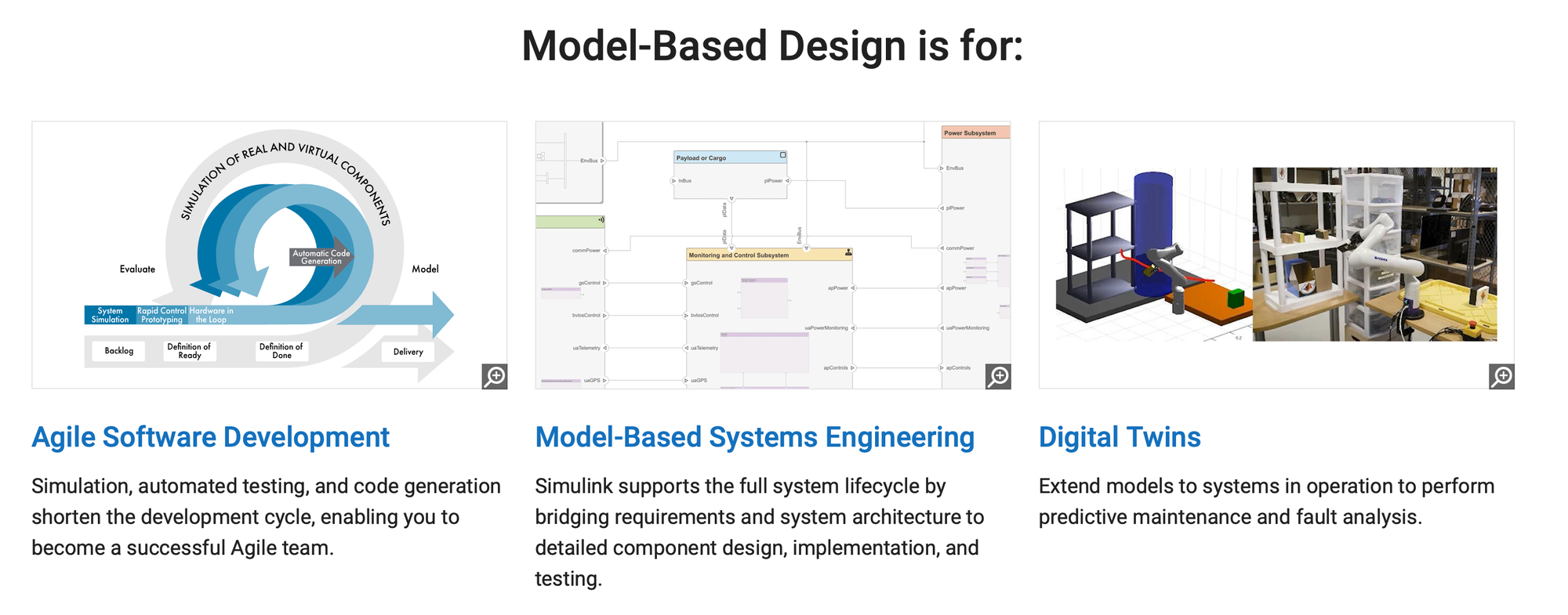
Python, on the other hand, excels in AI, machine learning, and automation, thanks to its rich ecosystem of libraries such as TensorFlow, PyTorch, and SciPy. It is widely used for data analysis, web development, and scripting, making it a versatile choice for various applications. While it does not natively include specialized engineering toolboxes like MATLAB, it offers powerful alternatives through open-source libraries and frameworks, though integrating them into industrial workflows often requires additional effort.
Julia is emerging as a strong contender in high-performance computing and numerical analysis. Designed for speed and efficiency, it provides faster execution for complex mathematical computations compared to Python and MATLAB. Its ability to seamlessly integrate with C and Fortran makes it an appealing choice for computational scientists and researchers. While Julia’s ecosystem is still maturing, it is increasingly being adopted in scientific research, optimization problems, and large-scale simulations.
MATLAB or Python or Julia: When to Use Each?
Each language offers distinct advantages. The best choice depends on the project’s requirements, industry, and technical needs.
Here’s a general comparison:
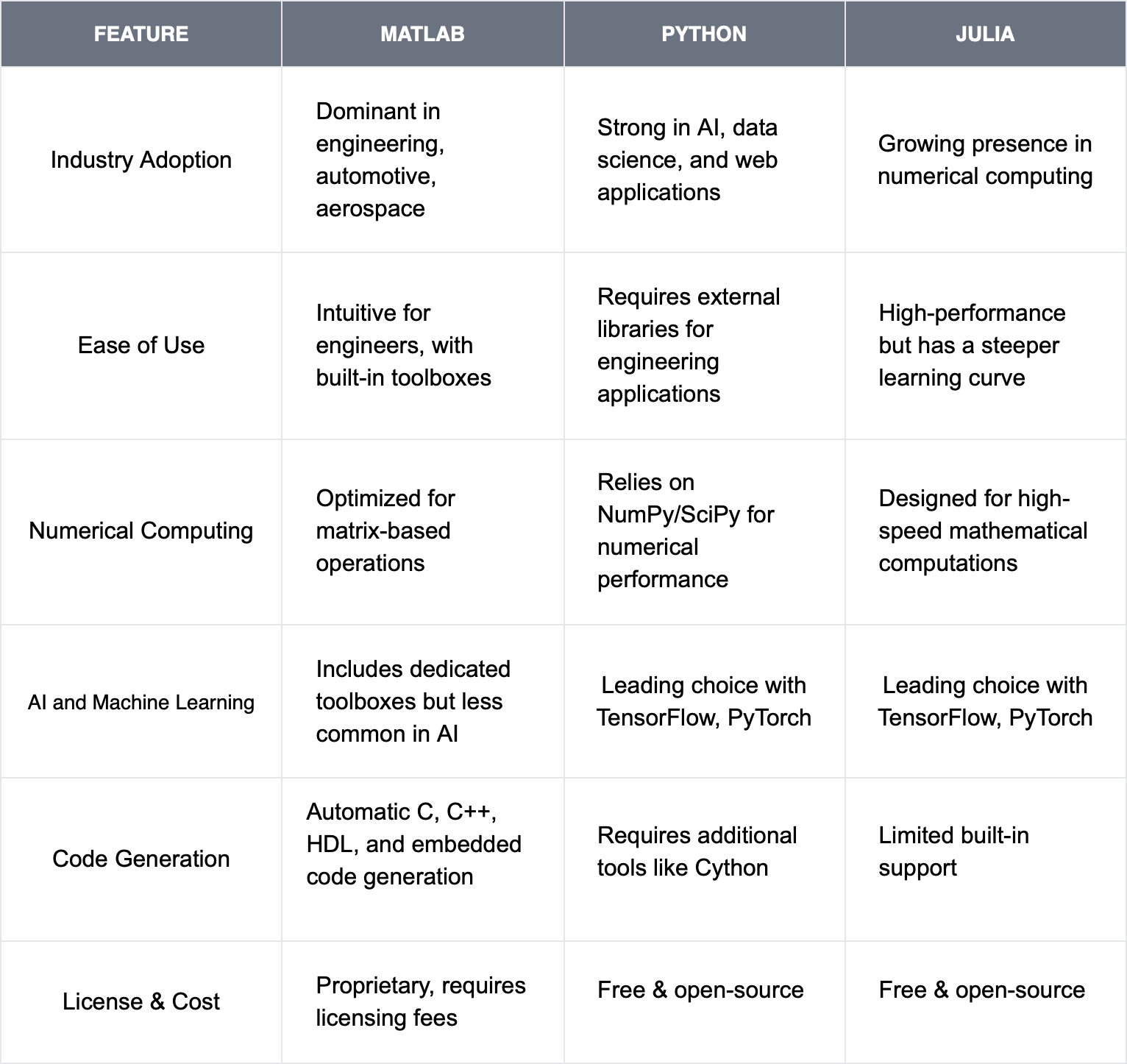
In summary, each language has unique strengths: MATLAB excels in engineering and regulated industries, Python leads in AI and automation, and Julia is rising in high-performance computing. The best choice depends on project needs, industry demands, and long-term goals.
Challenges and Considerations for Companies
One common challenge organizations face is managing software versioning and tool standardization. MATLAB often spreads organically within companies, leading to multiple versions being used across teams. This fragmentation can cause compatibility issues, inefficiencies, and difficulties in collaboration, particularly when different departments rely on varying features or toolbox versions. Standardizing software versions and maintaining oversight of which tools are in use, how they interact, and where potential conflicts may arise is essential for long-term efficiency.
In the podcast episode, Gareth Thomas highlights another key issue: many MATLAB users come from an engineering background rather than software development. He explains that while software engineers typically follow structured practices like version control, DevOps, and automated testing, MATLAB users often focus on solving engineering challenges without considering long-term maintainability. This can lead to inefficiencies when scaling projects or upgrading software versions.
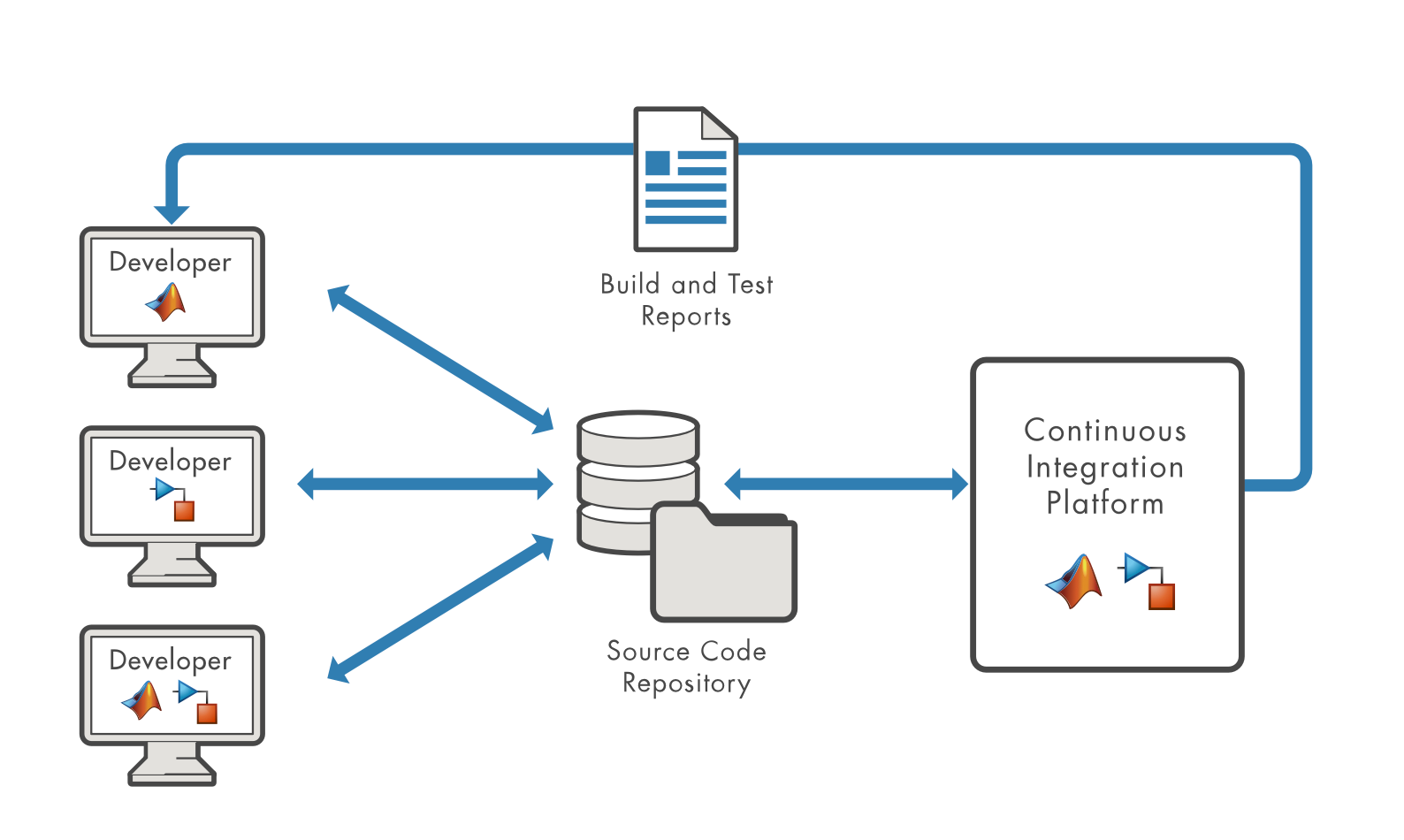
He notes that many organizations do not have a clear strategy for managing software updates, leading to potential compatibility issues and technical debt. Implementing structured testing, documentation, and version control practices can help reduce maintenance challenges and improve collaboration between teams.
Companies looking to transition between MATLAB versions or migrate to Python or Julia should assess their workflows, software dependencies, and compliance requirements carefully. Proper planning, including automated testing, pilot transitions, and incremental implementation, can help minimize disruptions, reduce risks, and ensure a smoother adoption process.
Furthermore, organizations need to evaluate licensing costs, tool availability, and long-term support when making these decisions. MATLAB's commercial licensing model differs significantly from Python’s open-source approach and Julia’s emerging ecosystem. Understanding the total cost of ownership, including support, training, and integration efforts, helps companies make informed choices that align with their technical and business goals.
Conclusion
While MATLAB, Python, and Julia each have their strengths, the best choice depends on industry requirements, project scope, and long-term software maintainability. MATLAB remains a key player in industries that require simulation, embedded systems, and regulatory compliance, while Python and Julia offer advantages in AI and high-performance computing.
Organizations should evaluate their needs carefully to choose the most effective tool for their workflow. Understanding the strengths of each language ensures optimized performance, reduced technical debt, and long-term success.
How to Learn More
For those interested in Gareth Thomas’ insights on MATLAB, Python, and Julia, check out this inspiring podcast or visit Version Bay for services that help organizations transition between software versions and implement best practices in numerical computing.

